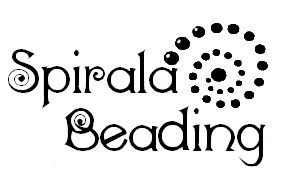These decorations are created on special beading frames that have holes in each arm and can be used to create snowflakes, stars, jewellery or decorative objects by sewing beads in a sophisticated way - the whole looks a bit like "sewn lace".
These frames are designed as a component for beading. The existing metal frames available on the market in the past lacked the ability to braid between the arms, beading around the arms and embellishing with beads was not convenient and difficult (they were designed more for simply stringing beads onto the arms). So I started to think about how it - how this could give beaders more design options and how it can be done elegantly - this was the basis for their creation.
The idea has been around for a long time, but it wasn't until the advent of 3D printers in households that it was possible to implement it. I invented the beading frame system and brought it to real life in collaboration with a programmer and 3D printer, who is my husband.
From the idea to the final product, it's taken a lot of theorizing, translating the designer's idea into a form understandable to the printer - and most importantly, a lot of time, nerves and a whole lot of mess.
Thanks to the holes in the arms beading skeletons provide countless design possibilities. They can be decorated with beads, cabochons, stones, sequins, buttons, ribbons, thread and combined with various creative materials.
Because I love Christmas ornaments and one of my favorite designs is snowflakes and stars, the first beading frames were six-pointed, resembling snowflakes. Another specialty of mine are bead beads, which is why the five-point skeletons were created, allowing you to design and create a beaded ball (dodecahedron). Next came beading frames with multiple arms, which gave the possibility to use them as bases for pendants, brooches, elements for bracelets or earrings.
And I'm still discovering and testing new possibilities :)
My beading frames are mostly made of recyclable, biodegradable PLA plastic, some of them are PLA (non biodegradable, but more flexible and durable).
HOW IT ALL WORKS
I have several types and sizes of flake skeletons, the Christmas ones have 6 or 12 arms, they all have holes in the arms for threading and some are designed with a smaller or larger hole in the middle to allow for the placement of a rivolk, shaton, cabochon or other bead. As with other bead flakes, the way in which the skeleton is decorated, i.e. the actual design, needs to be worked out. There are many designs, some can be combined with each other, often it is enough to replace one bead with another and the appearance of the snowflake is completely different, the possibilities are endless. If you have imagination, you can probably come up with your own decoration, there are no limits to your imagination.
I have several types and sizes of flake skeletons, the Christmas ones have 6 or 12 arms, they all have holes in the arms for threading and some are designed with a smaller or larger hole in the middle to allow for the placement of a rivolk, shaton, cabochon or other bead. As with other bead flakes, the way in which the skeleton is decorated, i.e. the actual design, needs to be worked out. There are many designs, some can be combined with each other, often it is enough to replace one bead with another and the appearance of the snowflake is completely different, the possibilities are endless. If you have imagination, you can probably come up with your own decoration, there are no limits to your imagination.
Here is a small overview of some decorations/snowflakes mostly (not all of them are published),
that I've posted somewhere on social media in the past years - more are coming...
The title of the snowflake is a link - it leads in a click-through to the blog or to social networks where sometimes there are more photos.
Sometimes I hope to get around to posting most of them on the blog, but time is running faster and faster...
